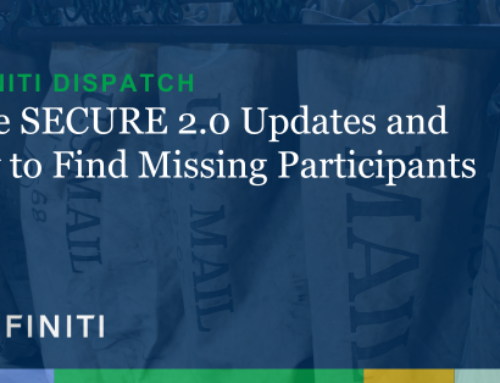The mass exodus of people switching employers continues to make news with catchy headlines like the Great Resignation and Big Quit. If you work in Human Resources, you’re on the front lines in the battle. And if you oversee company benefits, you may take this sign of the times as a signal it’s time to rethink your employee benefits package.
The majority of large- and medium-sized U.S. businesses already offer a retirement plan benefit to employees — about 67%, according to the Bureau of Labor Statistics. The percentage is much lower for small-company employers, with just one-third providing a defined contribution (DC) retirement plan.
No matter where your business sits on the company-size spectrum, workforce instability presents problems for your business — and an opportunity to revisit how you help employees save for retirement.
Overlooked Retirement Benefit?
The most popular retirement plan is a DC plan, such as a 401(k) or 403(b). One type of DC plan that often gets overlooked is a profit-sharing plan. Including one in your benefits lineup offers distinct advantages you may not have considered recently.
First, you help employees connect their individual and combined efforts to company profitability by rewarding them with a contribution to their profit-sharing account. The plan helps employees to save for retirement in a tax-friendly manner. When employees retire, they’re entitled to the profit-sharing contributions and any account earnings accumulated over the years.
Profit-sharing plans can be uniquely designed for your business, as long as you follow IRS guidelines. In a typical plan, the employer makes contributions from profits to plan accounts established for individual employees. The amount of the contributions is based on the level of profits for a given year.
Profit-sharing Plan Highlights
If you’re not quite sure how profit-sharing plans work, keep these seven points in mind:
- Predictable profitability isn’t required – A small or fledgling business or one with unpredictable profitability may be hesitant to set up a retirement plan that requires contributions to be made every year. With a profit-sharing plan, there’s no such requirement because the plan offers flexibility on when you make employee contributions.
- Company contributions can vary – You choose the employer contribution amount based on how your business performs in a given year, rather than contributing a specific amount outlined in a match formula like with a 401(k).
- No yearly contribution required – If your business isn’t financially able to transfer funds to the plan, you could choose to skip that year’s employee contribution. Or you might decide to reduce the size of the contribution you make for one year.
- Contributions are tax-deductible – As long as your profit-sharing contributions meet relevant tax law requirements, they’re tax-deductible. And with recent changes to qualified plan regulations, there are attractive tax credits you can enjoy from establishing a new profit-sharing plan.
- Pairs with 401(k) or stands alone – A well-designed profit-sharing plan is often coupled with a 401(k). This gives employees two tax-favored plans and potentially helps them build up even more retirement funds for their future. And a profit-sharing plan can be a stand-alone retirement benefit, nicely filling the gap if you don’t offer a 401(k) plan today.
- Vesting rules similar to 401(k) – As a qualified retirement plan, profit-sharing plans must follow IRS vesting guidelines. Options include immediate vesting of contributions you make and a vesting schedule that bumps up an employee’s vested percentage for each year of service.
- Employees pay taxes later – Contributions employees receive in their profit-sharing plan accounts aren’t taxable until they take distributions from the plan when they retire. Account earnings aren’t taxed either.
Challenging Times Calls for New Approaches to Benefits
With the tight labor market and more people working remotely, your business is competing with employers in and outside your industry and beyond your geographical area for top talent. As people consider where they hope to work and what they need from their next employer, they’re likely focused on better pay and benefits.
Adding a profit-sharing plan to your benefits lineup can be a win-win for your business and workforce. Employees have a direct stake in company profitability. The more nonconventional profit-sharing plan benefit is a great way to attract and retain people and revive flagging morale. There’s flexibility in how much an employer contributes to the plan and when they choose to do so. And a profit-sharing plan’s tax savings-related features appeal to both employers and employees.
We’re Here to Help
You don’t have to go it alone when determining if a profit-sharing plan is right for your business. You can rely on Definiti’s trusted team of retirement plan professionals. Together, we’ll explore your business’ needs, so we can recommend the plan design that best aligns with your goals.
If you’d like to find out if a profit-sharing plan could work for your business, let’s start the conversion. Call 1-(888)-912-3653 or email sales@definiti-llc.com.
—





